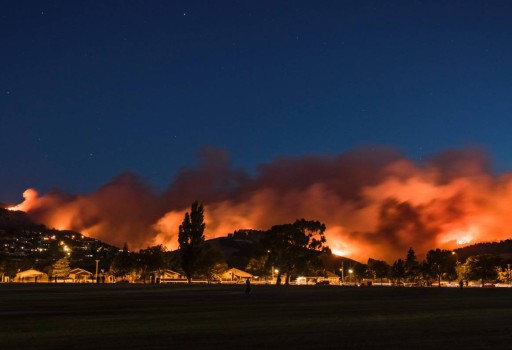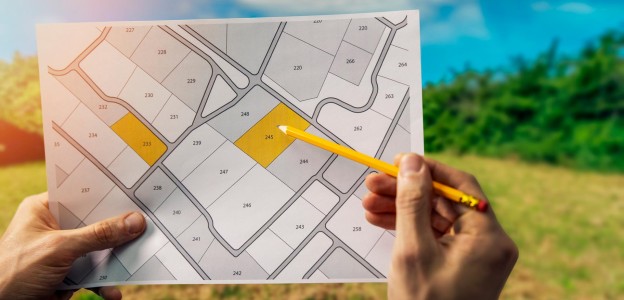21 May 2023
Slash and Burn: Port Hills Chairlift Fire Judgment a Warning of Landowners’ Duties
Authors

The Court of Appeal has recently ruled in favour of numerous property owners whose properties were damaged or destroyed after an adventure park operator failed to take reasonable steps to prevent a fire from spreading from its property. The case is an important reminder of the duties landowners owe to their neighbours more generally to take care in managing their properties.
The Facts
In Leisure Investments NZ Limited Partnership v Grace [2023] NZCA 89, a tourism operator (Leisure Investments) ran an adventure park in Christchurch’s Port Hills. A feature of this park was a chairlift which transported people and bikes between the base and summit. A section of pine forest had been cleared to make space for this chair lift. However, the park operators, rather than removing the cleared forestry, left a large amount of tinder-dry slash under the chairlift line.
On 13 February 2017, two fires started on the Port Hills within 90 minutes of one another. The adventure park was caught roughly between the two fires, which were burning between 300 and 500 metres from the top station of the chairlift. Neither fire started on land occupied by the adventure park and the park’s operators were not responsible for either of those fires.
The park’s operator promptly evacuated the chairlift’s top station and took steps to monitor the situation. The operator kept the lift running, concerned that a plastic core in the chairlift wire might overheat and snap if one area were left exposed to fire for a prolonged period. Unfortunately, although the operator took some steps to prevent the chairlift from endangering others, they did not attempt to remove the chairs from the chairlift until it was too late.
The operators had initially hoped the fire would not spread to the chairlift. However, by about 9:30 pm on 14 February, it was clear that the fire had indeed reached the chairlift. The operators worked through the night to keep the chairlift running and remove the chairs but it was a difficult and time-consuming process.
By 1:45pm on 15 February, some of the remaining chairs on the chairlift were clearly on fire. The chairs were upholstered with plastic material, which melted under the heat and dripped onto the pine slash below. The heat of the melting plastic was enough to cause the slash to ignite, first causing spot fires but then combining to ignite a new fire underneath the chairlift. It was this fire which spread to the plaintiffs’ properties. The fire did significant damage to these properties; some were consumed entirely.
The Decision
The plaintiffs claimed the park operators were liable in negligence, nuisance and under the now-repealed Forest and Rural Fires Act 1977. The plaintiffs had already been successful in the High Court, which gave judgment for the plaintiffs on all three points. The park operators appealed to the Court of Appeal.
The Court of Appeal upheld the High Court’s decision, finding the park operators liable. The park operators had caused the damage to their neighbours and failed to take sufficient steps to prevent that damage:
(a) Although the chairs were difficult to remove, the chairs could have been removed much earlier and without much impact on the park’s operations. The swift removal of the chairs would have prevented the fire starting in the first place. The Court was persuaded by one expert witness’ common sense assessment – “the worst that would have happened is that Leisure Investments would have spent eight hours taking the chairs off and another eight hours putting them back on.”
(b) Although the existing fire may have initially appeared under control, it was sufficiently close to be of concern. Landowners needed to consider how inherently unpredictable forest fires can be. In addition to this, the operator was concerned enough about the fire to keep the chairlift running and protect the plastic core from overheating.
(c) The operators should likewise have removed the slash from underneath the chairlift long ago, which they must have known was a fire risk.
The park operators attempted to argue that they were simply following the instructions as set out in the chairlift manufacturer’s manual. The manual made no recommendation to remove the chairs in a fire. The Court was clear that this could not save the operator from liability: the fire risk posed by the chairs was obvious and the operator knew the chairs could be removed. The manual was generic and contemplated the chairlift operating in snowy environments, not areas prone to fire. The question was what a reasonable person would do in the circumstances with the knowledge and experience of the park’s operator. A reasonable person operating the chair lift would have taken earlier action to remove the chairs, reducing the fire risk.
Impact
The case is a high-profile example of the legal rule that landowners or occupiers are generally not permitted to use their land in a way that unreasonably interferes with another person’s use or enjoyment of their own property. Where they do interfere with that use or enjoyment, the person affected may have a claim against the occupier in negligence, nuisance or another legal action. The landowner can, in some cases, still be liable even when they were not to blame for the initial act which caused the damage (as in this case).
These events were also prophetic of the need for those clearing forestry areas to be careful of what they leave behind. New Zealand more recently is grappling with significant losses from forestry slash displaced in the wake of Cyclone Gabrielle. A landowner stores such material on their property without regard to the risk of fire or flood very much at their own peril.
Finally, a landowner needs to be conscious that, if their actions are interfering with another person’s property, they should take reasonable and common sense steps to prevent that interference. This can be the case even where the landowner is otherwise following some objectively approved standard. If the interference continues, it may not be enough for the landowner to protest that they were simply following the local council’s guidelines or the manufacturer’s manual.
It’s not just fire which can justify a claim; cases of this nature have been brought against neighbours for excessive noise, cricket balls being hit regularly onto a property, noxious smells, the crossing of weeds or roots across boundaries, the risk of landslide or flooding – even intense sunlight being reflected off a neighbour’s balcony. Those affected may be entitled to remedies such as a Court order stopping the neighbour from continuing what they are doing or an award of compensation.
The litigation team at Saunders Robinson Brown are experienced in dealing with a wide range of disputes and are ready to assist you should you find yourself in need of advice. Please feel free to contact any of the authors if you need assistance.
Disclaimer
The above information is of a general nature only. The information in this article does in no way constitute legal advice and all readers should contact a law firm for advice relating to your specific circumstances.








